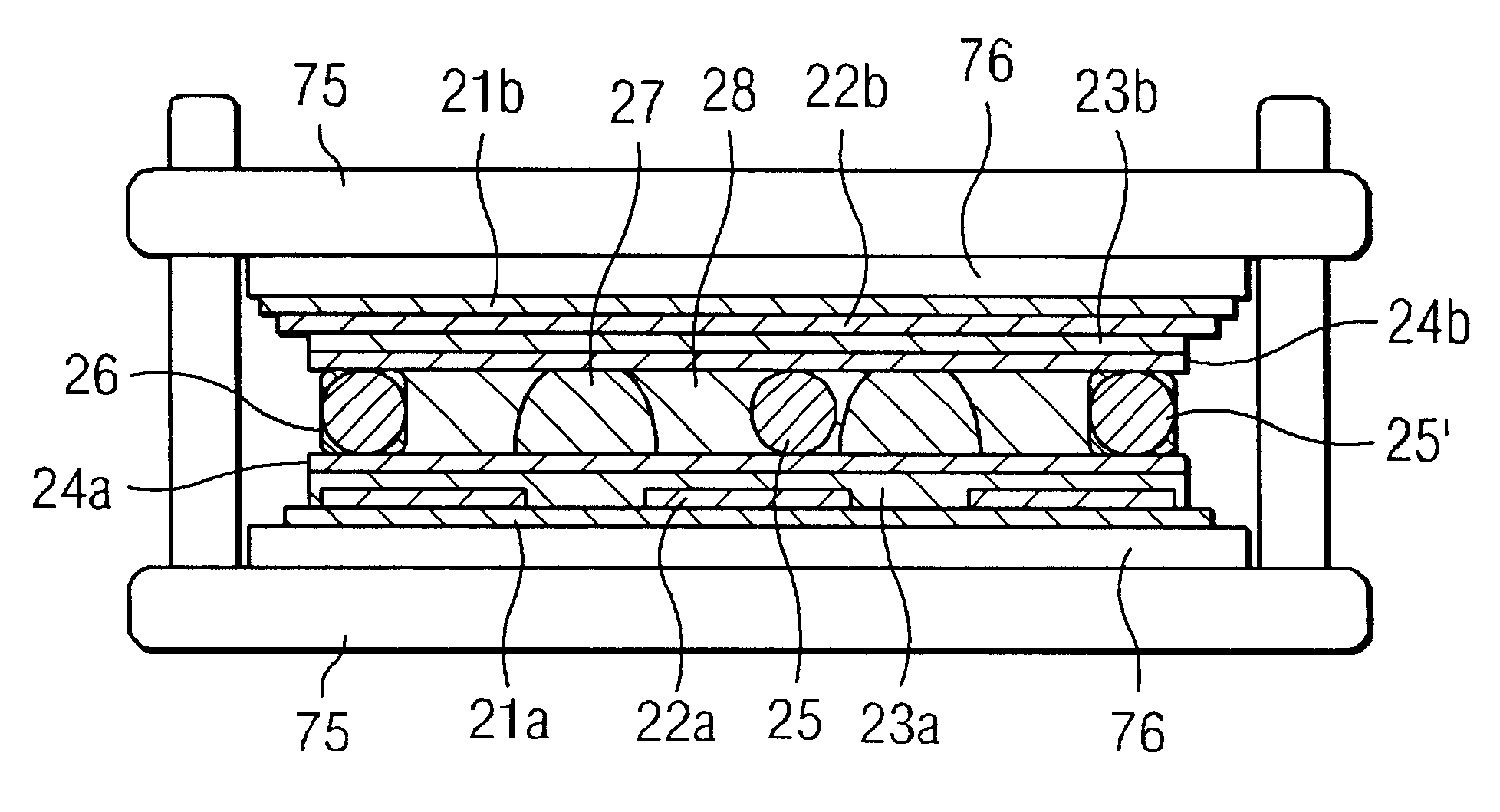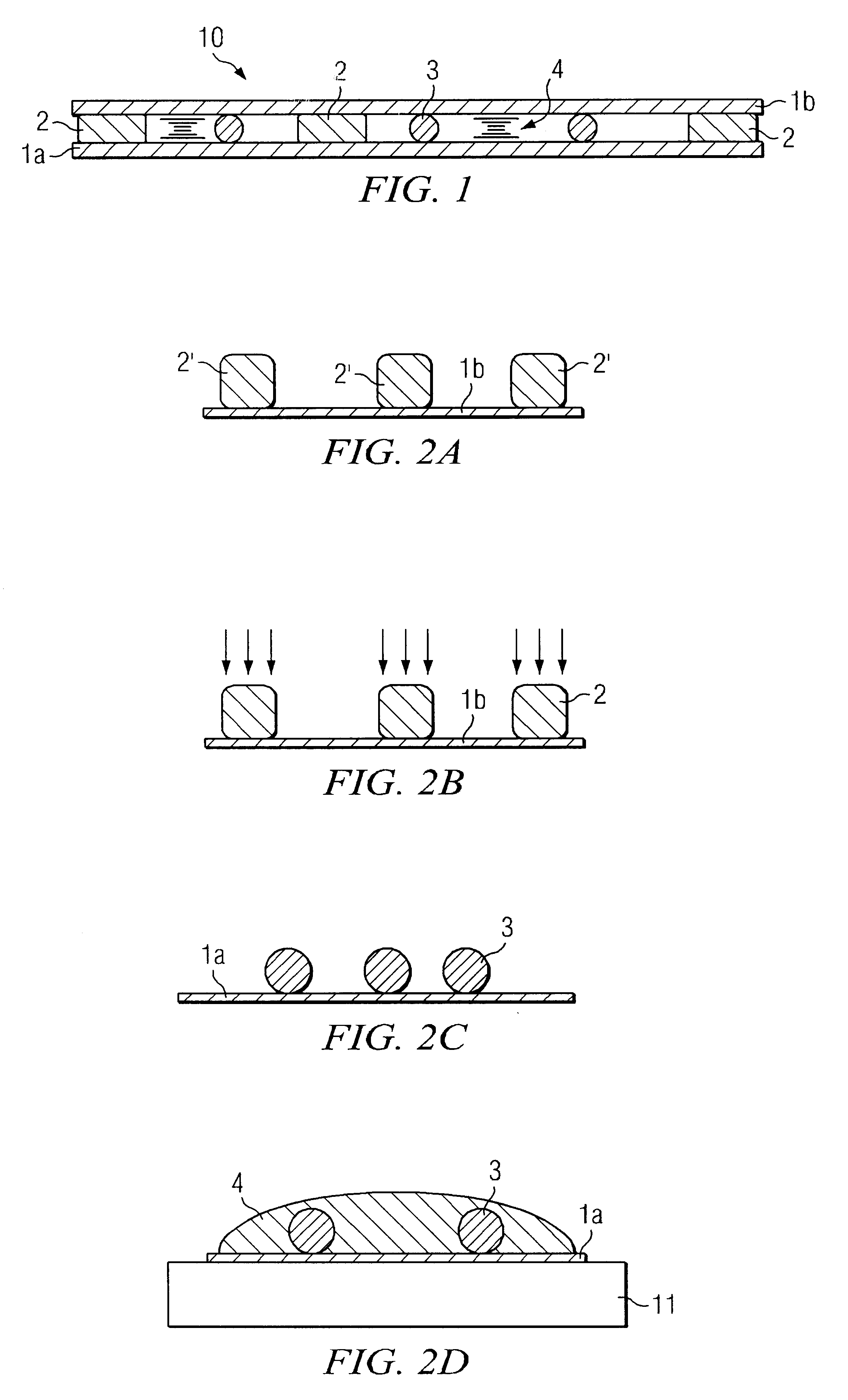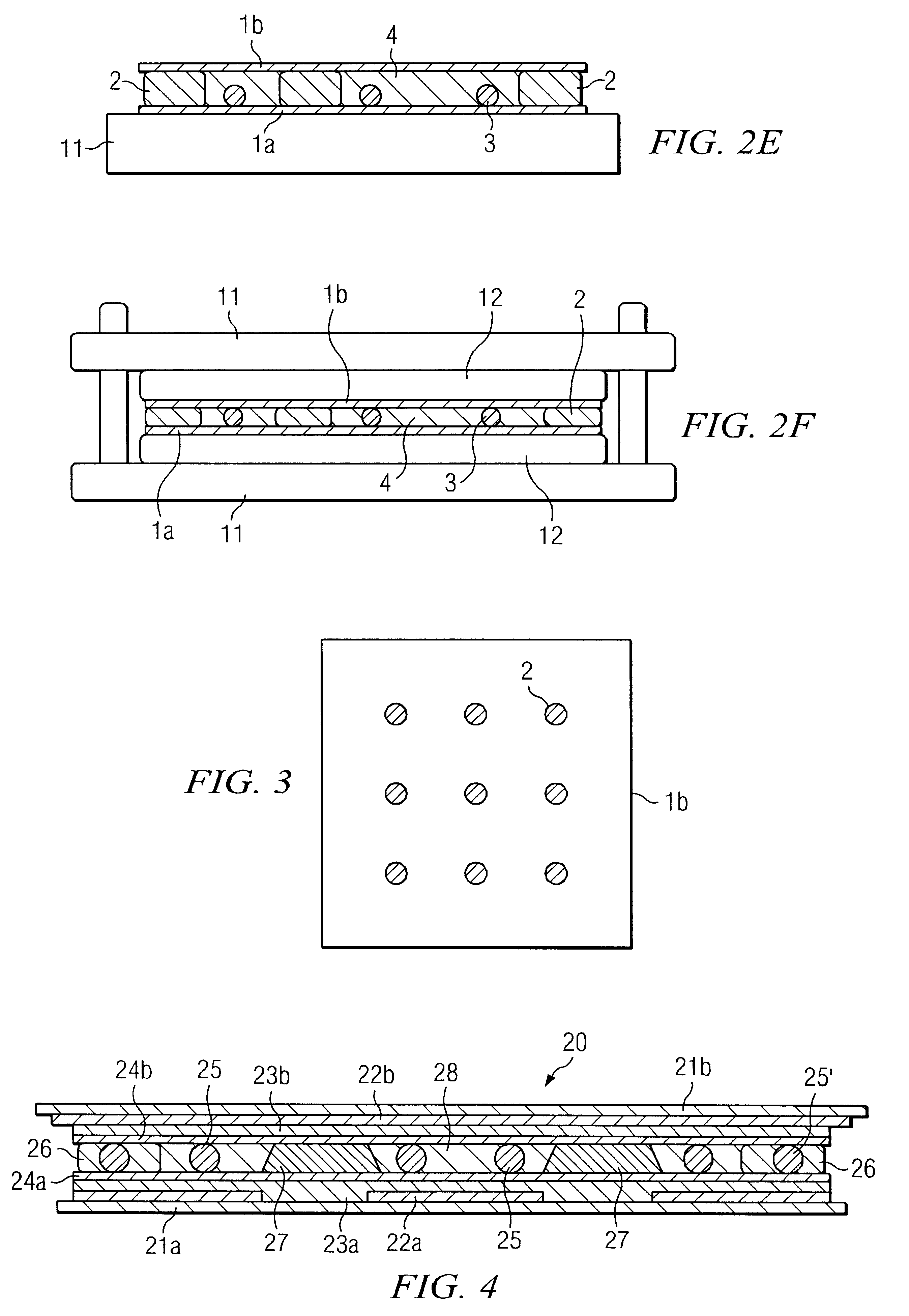Liquid crystal light modulating device and a method for manufacturing same
a technology of light modulating device and liquid crystal, which is applied in the direction of optics, instruments, non-linear optics, etc., can solve the problems of reducing display quality, difficult and difficulty in regulating uniformity, so as to achieve high-quality displays
- Summary
- Abstract
- Description
- Claims
- Application Information
AI Technical Summary
Benefits of technology
Problems solved by technology
Method used
Image
Examples
second embodiment (
FIGS. 4.about.15)
In the second embodiment, we describe the structure and method of manufacturing a liquid crystal display device 20 for display an image by switching ON / OFF a plurality of pixels.
FIG. 4 shows a cross section view of the liquid crystal display device 20. A liquid crystal material 28 is filled between a pair of substrates 21a and 21b as a light modulating layer. Transparent electrodes 22a and 22b are formed in a matrix layout on the substrates 21a and 21b, and insulating layers 23a and 23b and orientation layers 24a and 24b are formed over the transparent electrodes as desired. Spacers 25 are provided between the substrates 21a and 21b to maintain the inter substrate gap. The edges of the substrates 21a and 21b are adhered by a resin seal 26 containing the spacers 25'. In the display region is arranged a resin structure 27 adhered to the substrates 21a and 21b, so as to support the substrates 21a and 21b.
In the liquid crystal display device 20, the points of intersecti...
example 2
The previously mentioned glass 7059 was used as a first substrate on which an ITO (indium tin oxide) layer 200 nm in thickness was formed by a spattering method. A flexible transparent conductive film FST-5352 (Sumitomo Bakelite Co., Ltd.) was used as the second substrate. This substrate also had an ITO layer formed thereon. The ITO on these substrates was subjected to photolithographic processing to form a band like transparent electrode pattern with an electrode pitch of 350 .mu.m and an electrode width of 300 .mu.m.
Then, a thin film 1000 angstroms in thickness was formed on the transparent electrodes of both substrates via a spin coat method using polysilazane L120 (Tonen Corp.), the substrates were heated for 2 hr at 120.degree. C. in a thermoregulated bath, then an insulating layer was formed by heating for 3 hr in a thermal and moisture regulated bath at 85% humidity. Next, a thin film only 500 angstroms in thickness was formed on the insulating layer of both substrates via a ...
example 3
Example 3 is a liquid crystal display device produced using a resin structure formed of a thermosetting curable resin material. In other aspects, example 3 is identical to example 2, and only the dissimilar aspects are described below.
A thermosetting epoxy resin material, XN21-S (Mitsui Chemicals Co., Ltd.; glass transition temperature 138.degree. C.) was used as the curable resin material. After printing the resin material using a screen identical to that used in example 2, the substrates were heated in a thermoregulated bath at 150.degree. C. for 90 min to cure the resin. Adhesion of the two substrates was accomplished using the device shown in FIGS. 10.about.13. The surface temperature of the heating roller was set at 160.degree. C.
The liquid crystal display device produced as described above maintained uniform inter substrate gap, and had extremely few display irregularities.
PUM
| Property | Measurement | Unit |
|---|---|---|
| Temperature | aaaaa | aaaaa |
| Flexibility | aaaaa | aaaaa |
| Shape | aaaaa | aaaaa |
Abstract
Description
Claims
Application Information
 Login to View More
Login to View More - R&D
- Intellectual Property
- Life Sciences
- Materials
- Tech Scout
- Unparalleled Data Quality
- Higher Quality Content
- 60% Fewer Hallucinations
Browse by: Latest US Patents, China's latest patents, Technical Efficacy Thesaurus, Application Domain, Technology Topic, Popular Technical Reports.
© 2025 PatSnap. All rights reserved.Legal|Privacy policy|Modern Slavery Act Transparency Statement|Sitemap|About US| Contact US: help@patsnap.com



